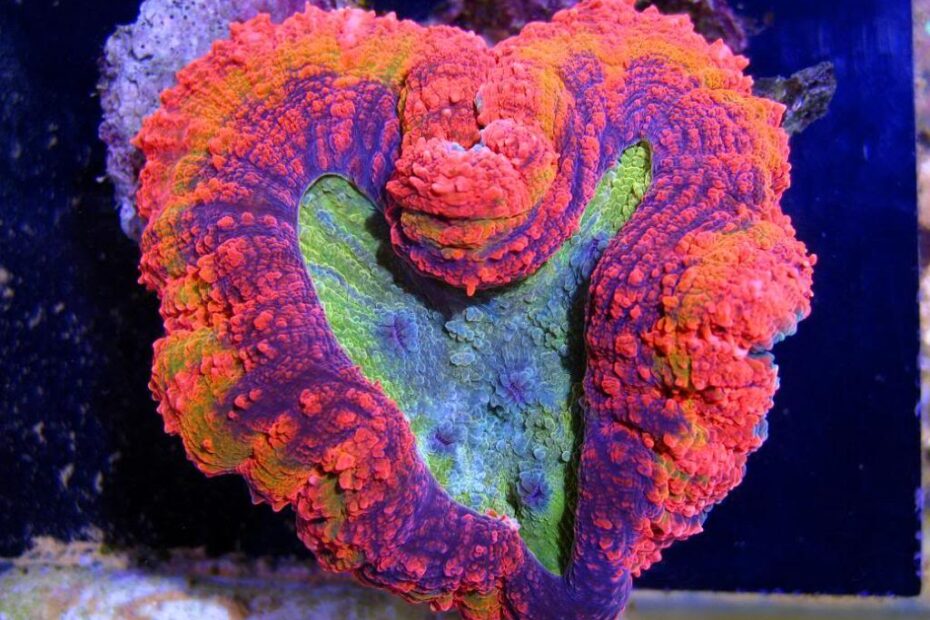Lobophyllia Coral (Lobo Coral, Brain Coral)
Quick Guide:
• Common Name: Lobo Coral, Lobed Brain Coral, Open Brain Coral
• Scientific Name: Lobophyllia spp.
• Class: Anthozoa
• Origin: Indo-Pacific, Australia, Fiji, Indonesia, Red Sea
• Category: LPS (Large Polyp Stony Coral)
• Care Level: Beginner to Intermediate
• Temperament: Semi-aggressive (can extend sweeper tentacles)
• Lighting: Low to Medium (PAR 50-150)
• Flow: Low to Moderate (gentle, indirect flow)
• Placement: Bottom to Middle (rockwork or sandbed)
• Growth Rate: Slow to Moderate
Overview:
Lobophyllia corals, commonly called Lobo corals, are stunning large polyp stony (LPS) corals that feature vibrant colors and a fleshy, brain-like structure. Their thick, meaty polyps can expand significantly, making them an attractive centerpiece in many reef tanks. They are fairly hardy, making them a great option for beginners looking to try LPS corals.
Tank Requirements & Water Parameters:
Lobophyllia corals are adaptable but require stable water parameters for long-term success:
• Temperature: 76-80°F (24-27°C)
• pH: 8.1-8.4
• Salinity: 1.024-1.026 SG
• Alkalinity: 8-10 dKH
• Calcium: 400-450 ppm
• Magnesium: 1250-1350 ppm
• Nitrate: 5-15 ppm (prefers moderate nutrient levels)
• Phosphate: 0.03-0.1 ppm
Lobos do best in a moderate nutrient environment—too low, and they may recede; too high, and algae can become a problem.
Lighting Needs:
Lobos prefer low to moderate lighting (50-150 PAR). They naturally inhabit shallow to mid-depth reefs, often in shaded areas or under ledges. Excessive lighting can cause bleaching or retraction, so placing them in a dimly lit section of the tank is ideal.
Flow Requirements:
• Low to moderate flow is best to prevent debris from settling on their fleshy polyps.
• Avoid strong, direct flow, as this can cause the coral to remain retracted and stressed.
• A gentle, alternating current will allow the coral to expand fully while keeping its tissue clean.
Feeding & Nutrition:
Lobos contain symbiotic zooxanthellae for photosynthesis but benefit significantly from direct feeding. These corals are avid feeders and can consume a variety of meaty foods. Their feeding tentacles typically extend at night, but they can be trained to accept food during the day with consistent feeding schedules.
Best foods for Lobophyllia:
• Mysis shrimp, brine shrimp, finely chopped seafood
• Pellet and frozen coral foods (e.g., Reef Roids, Coral Frenzy, Benepets)
• Amino acid and plankton supplements
Target feeding 1-2 times per week can enhance growth and maintain vibrant colors.
Placement & Aggression:
• Ideal Placement: Bottom to middle of the tank, preferably on the sandbed or stable rockwork.
• Space Consideration: Lobos have moderate aggression—they can extend sweeper tentacles, though not as aggressively as Torches or Galaxea corals.
• Keep at least 3-4 inches away from neighboring corals to prevent potential stinging.
Growth & Propagation:
Lobos grow slowly to moderately, forming massive, lobed colonies over time. Unlike branching corals, they do not spread quickly but instead develop larger, fleshy polyps.
Fragging Lobophyllia:
• Fragging can be done using a bone saw or rotary tool, cutting between the lobes.
• Newly fragged pieces should be placed in low-flow, stable environments to heal before reintroduction into the main tank.
Popular Color Morphs & Variations:
Lobos are known for their incredible variety of colors, with some of the most popular morphs being:
• Rainbow Lobophyllia – A mix of neon reds, blues, and greens
• Ultra Red Lobo – Deep, rich red with fluorescent highlights
• Toxic Green Lobo – Bright green with a contrasting center
• Warpaint Lobo – A multicolored pattern resembling camouflage
• Orange Crush Lobo – A vibrant orange with blue or green streaks
Challenges & Common Issues:
• Tissue recession: Often caused by unstable parameters or nutrient starvation. Moderate feeding and stable alkalinity help prevent this.
• Bleaching or loss of color: Usually due to excessive lighting. Move to a shaded area if fading occurs.
• Algae growth on tissue: Can happen if detritus settles on the coral. Ensure proper flow and clean any buildup manually if needed.
• Damage from pests: Certain reef pests, like nuisance worms or vermetid snails, can irritate the coral. Inspect new frags carefully.
